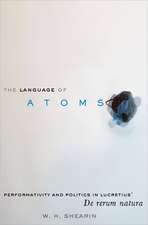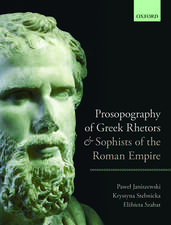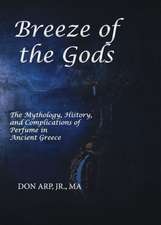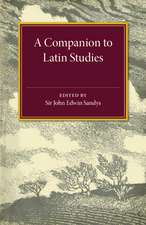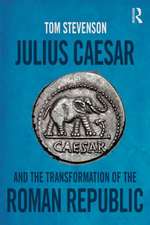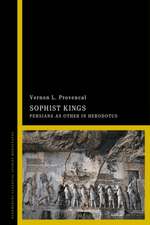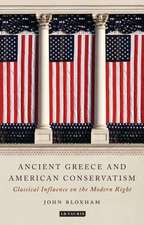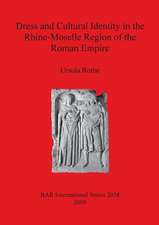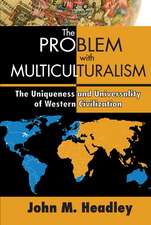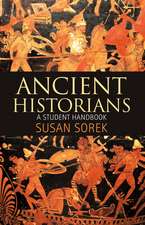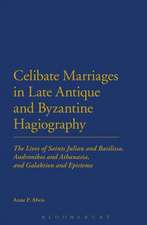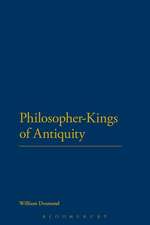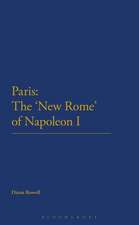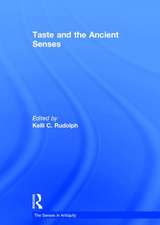The Toga and Roman Identity
Autor Ursula Rotheen Limba Engleză Hardback – 11 dec 2019
| Toate formatele și edițiile | Preț | Express |
|---|---|---|
| Paperback (1) | 217.91 lei 6-8 săpt. | |
| Bloomsbury Publishing – 16 iun 2021 | 217.91 lei 6-8 săpt. | |
| Hardback (1) | 656.06 lei 6-8 săpt. | |
| Bloomsbury Publishing – 11 dec 2019 | 656.06 lei 6-8 săpt. |
Preț: 656.06 lei
Preț vechi: 762.87 lei
-14% Nou
Puncte Express: 984
Preț estimativ în valută:
125.58€ • 136.45$ • 105.55£
125.58€ • 136.45$ • 105.55£
Carte tipărită la comandă
Livrare economică 21 aprilie-05 mai
Preluare comenzi: 021 569.72.76
Specificații
ISBN-13: 9781472571540
ISBN-10: 1472571541
Pagini: 256
Ilustrații: 30 bw illus
Dimensiuni: 156 x 234 mm
Greutate: 0.48 kg
Editura: Bloomsbury Publishing
Colecția Bloomsbury Academic
Locul publicării:London, United Kingdom
ISBN-10: 1472571541
Pagini: 256
Ilustrații: 30 bw illus
Dimensiuni: 156 x 234 mm
Greutate: 0.48 kg
Editura: Bloomsbury Publishing
Colecția Bloomsbury Academic
Locul publicării:London, United Kingdom
Caracteristici
Provincial dress is a neglected topic in studies of Roman culture and its study illuminates society in unexpected and insightful ways
Notă biografică
Ursula Rothe is Senior Lecturer in Classical Studies at the Open University, UK.
Cuprins
List of Illustrations Acknowledgements Abbreviations1 Introduction 2 The Toga: A Brief History3 The Toga and the Roman Man 4 The Toga and Social Status 5 The Toga and Politics 6 The Toga in the Provinces 7 The Toga in Late Antiquity Epilogue Glossary Notes Bibliography Index
Recenzii
[Ursula Rothe's] contribution represents not only a significant analysis of the toga but also a valuable historical resource for anyone exploring the history of Roman culture, as well as anyone interested in identity issues in the Classical world as it clearly explains the transfer of ancient dress rituals to today's cultural traditions.
A must-read for all those interested in Roman social history. It is readable, written in a clear style, and helpfully illustrated with photographs throughout the text.
This is a book sorely needed by clothing historians ... This is a wonderful up-to-date work on the toga, incorporating lashings of literary, archaeological finds and artistic evidence, and giving a full picture of draping styles well into late antiquity ... It should be on the bookshelf of everyone interested in ancient dress.
Undoubtedly this book has set the standard for any future scholarship on the topic . A goldmine of information.
An in-depth and insightful account of a wide range of aspects of Roman social, political and cultural history, seen through the lens of the toga. This subtle and nuanced analysis of the toga reveals its multi-faceted significance not only for men of the elite classes at Rome, but also for women, other levels of society, and in the provinces.
A fascinating delineation of the toga's complex history and meanings, first worn by women and men, later a male garment symbolizing status, public duty, and political power. Not simply a draped garment, but "the dress of an empire.''
A must-read for all those interested in Roman social history. It is readable, written in a clear style, and helpfully illustrated with photographs throughout the text.
This is a book sorely needed by clothing historians ... This is a wonderful up-to-date work on the toga, incorporating lashings of literary, archaeological finds and artistic evidence, and giving a full picture of draping styles well into late antiquity ... It should be on the bookshelf of everyone interested in ancient dress.
Undoubtedly this book has set the standard for any future scholarship on the topic . A goldmine of information.
An in-depth and insightful account of a wide range of aspects of Roman social, political and cultural history, seen through the lens of the toga. This subtle and nuanced analysis of the toga reveals its multi-faceted significance not only for men of the elite classes at Rome, but also for women, other levels of society, and in the provinces.
A fascinating delineation of the toga's complex history and meanings, first worn by women and men, later a male garment symbolizing status, public duty, and political power. Not simply a draped garment, but "the dress of an empire.''

